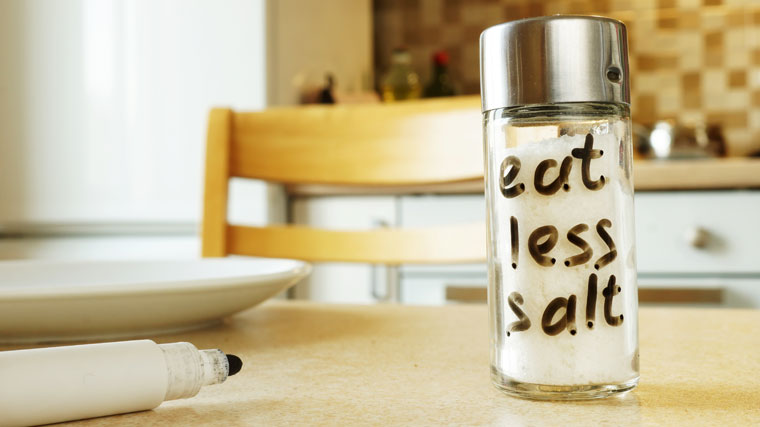- Cardiology And Vascular Health
- Diet and Nutrition
- Health Topics
- Heart And Vascular Disease Prevention
- Special Health Conditions
Choose Low-Sodium Food For Heart Health

Salt, or sodium, is found naturally or added to almost all foods we eat, but sometimes it can be hard to tell how much sodium is in what we’re consuming.
That’s a concern because high-sodium diets contribute to high blood pressure, which is a risk factor for heart disease.
Though the recommended sodium intake for healthy adults is no more than 2,300 mg per day, most Americans consume an average of 3,400 mg per day – far more than the recommendation, according to the Food and Drug Administration (FDA).
The American Heart Association (AHA) recommends that reducing your daily sodium intake to no more than 1,500 mg can result in an even greater blood pressure reduction.
It’s estimated that 80 percent of foods in Americans’ diets are processed or packaged. These types of foods are much higher in sodium content than fresh alternatives.
Examples of some of the most common processed foods, include:
- Bread
- Cereal
- Cheese
- Condiments
- Deli meat
- Frozen meals
- Pastas
- Snack foods
- Soda, including diet soda
Despite your best effort to choose foods labeled low-sodium or reduced-sodium, even these packaged foods can sometimes have more sodium than people need, according to the FDA.
For example, low sodium means that there are 140 mg or less of sodium per serving, and reduced sodium means there is at least 25 percent less sodium than the regular version of the product, according to the FDA.
While that decrease in sodium is a good start, you might not actually be cutting back much depending on how many servings you eat and how much sodium the product started with.
The National Institutes of Health (NIH) recommends that rather than relying on these kinds of terms, people should instead read food labels and compare with similar options to find the lowest sodium choice.
The NIH adds that just because a food doesn’t taste salty does not mean it is low in sodium.
Over-the-counter medications are a source of sodium of sodium that you may not be aware of.
Some pain relievers, calcium supplements, zinc supplements, and some medications taken to soothe stomach ulcers and gastrointestinal reflux, contain significant amounts of sodium, according to the AHA. In some cases, a single dose can contain more sodium than the 1,500 mg per day recommended for people with high blood pressure.
Talk to your physician about low-sodium options before taking prescription and over-the-counter medications.
Source: American College of Cardiology; Food and Drug Administration; American Heart Association; National Institutes of Health




